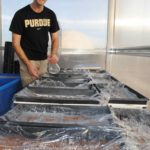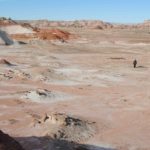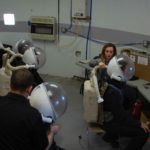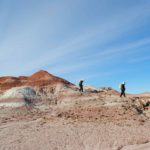Crew 186 Green Hab Report 02Jan2018
GreenHab Report
Mark Gee
02Jan2018
Environmental control:
Heating for entire Greenhab
Shade cloth on the crops
Working Hour: 06:00PM
Inside temp at working hour: 16 C
Outside temp during working hours: 0 C
Inside temperature high: 35 C
Inside temperature low: 15 C
Inside humidity: 26 %RH
Inside humidity high: 35 %RH
Inside humidity low: 16 %RH
Hours of supplemental light:
For the crops 07:00-08:00AM, 05:00 – 11:59PM
Changes to crops: Three flats of radish microgreens have been planted.
Daily water usage for crops: 8.5 gallons
Time(s) of watering for crops: 09:00AM, 04:30PM
Moring research observations: The Greenhab Officer from Crew 185 left an experiment comparing the growth of tomato plants with and without a foliar application of moringa extract. Both treatments are growing well.
Changes to research plants:
Space exploration is a great challenge and the next step of the journey is to send a person to Mars. Plants will play a critical role because of their ability to generate oxygen, water, and fresh food. In the near future, generating fresh food will be the most important role for plants because abiotic means of providing oxygen and water are very effective.
Microgreens provide a quick and efficient way to produce fresh food in space because they can be harvested in 10 days and can potentially grow without soil. I am comparing how well microgreens grow in potting soil, pulverized clay, and on a cloth with no growth medium to investigate if soil-free microgreen production is feasible in simulated Mars greenhouse habitat.
As well, plants depend on the microbes present in their environment to help them grow. As far as we know, no bacteria exist on Mars, and future Mars explorations will attempt to remain as sterile as possible to avoid contaminating the planet. The one source of microbes that will be intentionally transported are the microbes stored in the guts of the astronauts.
How well will microgreens grow when removed from the context of their native microbiome? If the microgreens are colonized by microbes from the astronauts, will there be an additional effect on plant growth?
To help answer these questions about the plant microbiome I am growing radish microgreens in a sterilized, soil-free environment and comparing treatments that have been inocculated with greywater from the hab, inocculated with native soil bacteria, and innoculated with sterile water.
In total, 15 flats of radish microgreens have been planted for the experiments above.
Aquaponics: Not Functional
Narrative: Last night I was working late in the Green Hab to prepare the microgreen experiment. At about 9pm the lights shut off unexpectedly which was concerning because there have been so many problems with the generator. Fortunately, it was only the analog timer that had malfunctioned and I was able to quickly reset it to get the lights back on.
This morning, the microgreen experiment was set up with the help of our Commander Max.
The Arduino temperature/humidity logger died yesterday after 28 hours of recording data. This means I only have to swap the batteries once a day. The difference between the logged data and readouts from the gauge used by previous crews was reasonably small.
A rocket ship landed mid-afternoon and deposited several bags of potting soil and perlite outside the habitat. Thank you to the pilot.
Support/supplies needed: None







You must be logged in to post a comment.